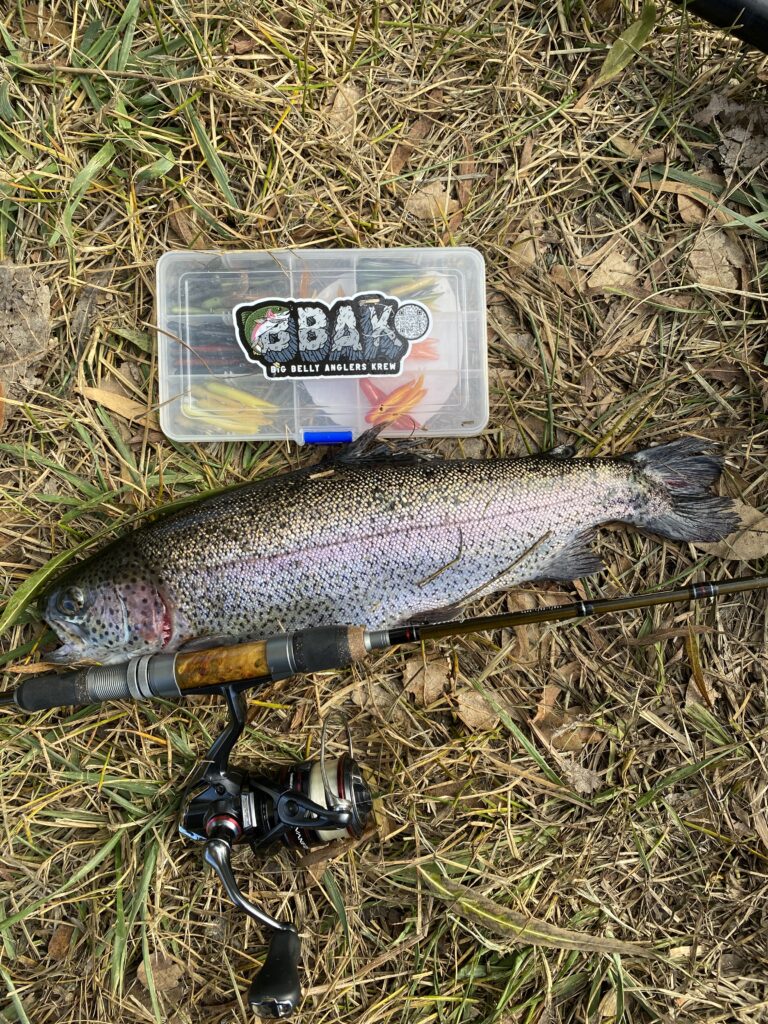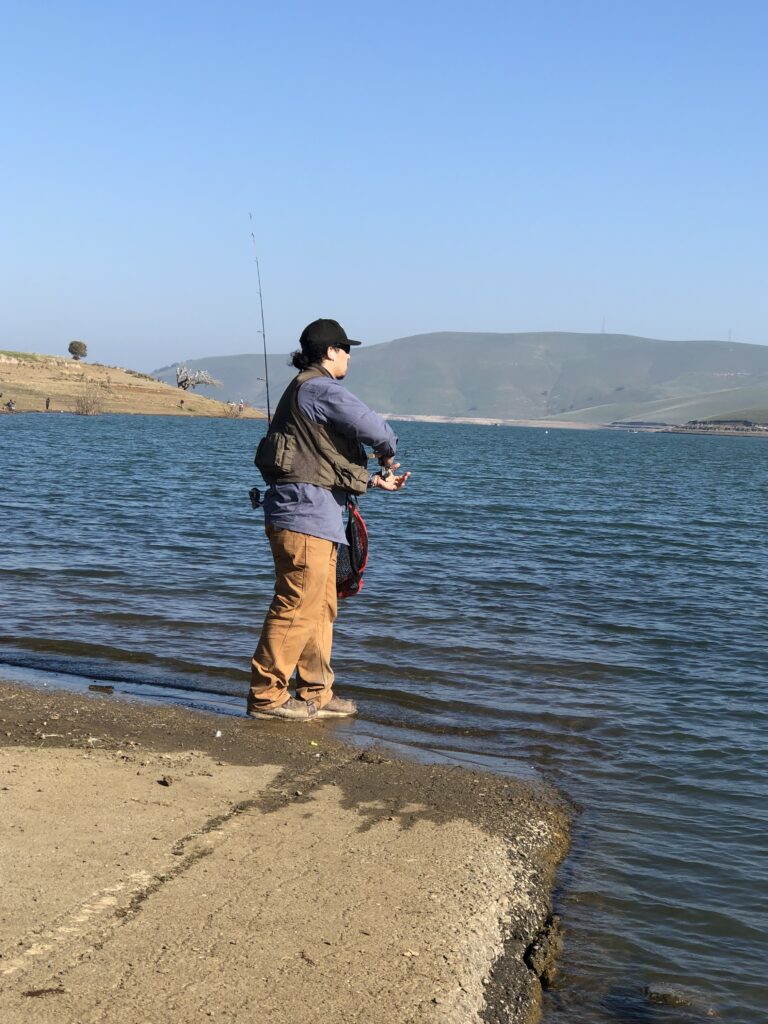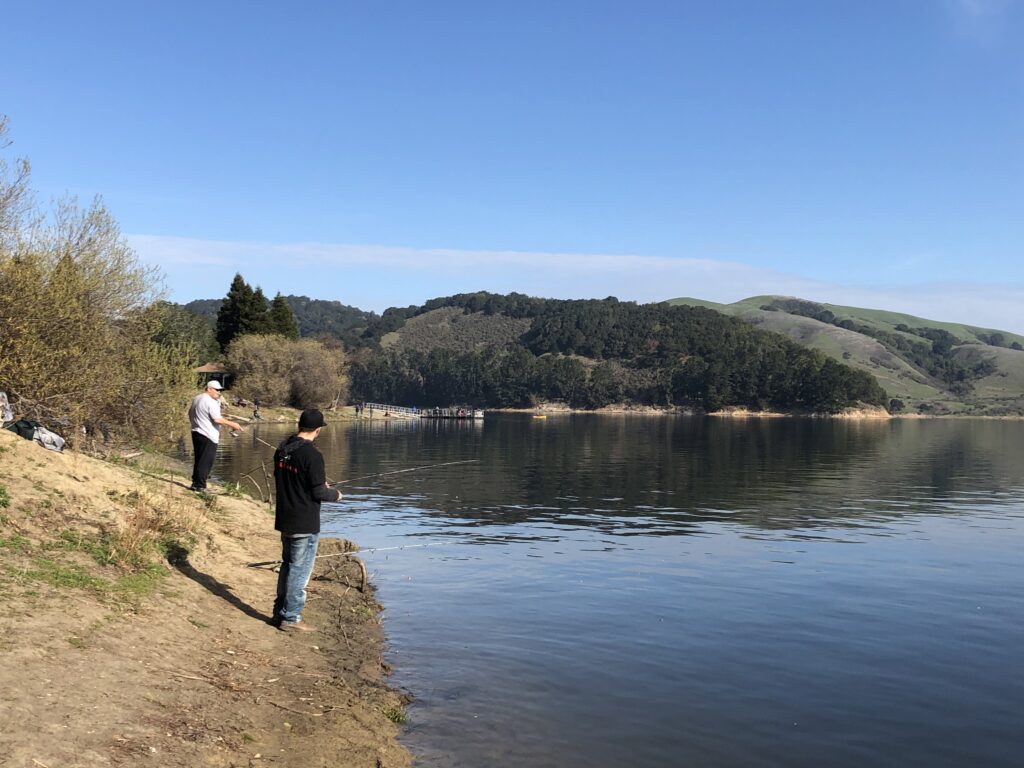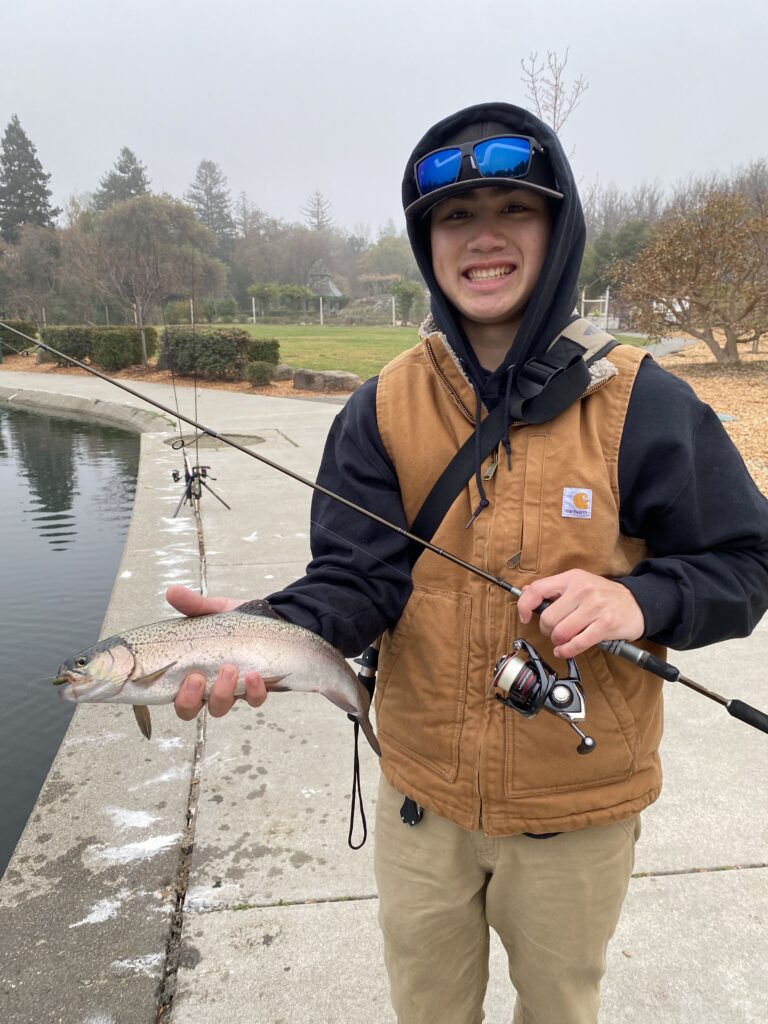Urban Trout Fishing Revolution: New Lures For New Era Of Anglers

The following appears in the February issue of California Sportsman:
By Mark Fong
For most of my adult fishing life I have had a singular focus. I was a bass fisherman and only a bass fisherman. If I was fishing, I was bass fishing.
But then a funny thing happened a few years ago. I was writing about – you guessed it – bass fishing for a regional periodical and one day the editor asked me if I could do an article about suburban trout fishing for an upcoming edition.
As I began researching the story, it soon became apparent that a lot had changed since the last time I broke out my trout rod. Truth be told: Before becoming bass-centric, growing up I cut my teeth fishing for trout at the local reservoirs near my Bay Area childhood home.
Back then trout fishermen like me fell into two categories: you were either a fly fisherman or a bait dunker. I was the latter, having spent many memorable days at San Pablo and Lafayette Reservoirs soaking PowerBait for planter trout.
Today, the East Bay suburban trout scene continues to grow and evolve thanks in no small part to a growing segment of hardcore anglers who pursue suburban trout with specialized artificial lures and next- level tackle with the same fervor and dedication that would rival any bassing savant.
It is this trend that spoke to the bass angler in me and has effectively reignited my love for trout fishing. Let’s take a look at some of the key factors that have helped to shape the new breed of suburban trout angler.
THE FISHERIES
Traditionally, the suburban trout season runs from the fall to the spring. During this period conditions are ideal for the California Department of Fish and Wildlife to plant hatchery trout in many local East Bay waters. At the same time, the East Bay Regional Park District typically plants Del Valle, Lake Chabot, Shadow Cliffs, Quarry Lakes, Contra Loma, Temescal and Don Castro.
In addition, San Pablo Reservoir (closed until its Feb. 3 reopening) and Los Vaqueros Reservoir are very popular local trout fisheries as well, and managers there supplement the CDFW trout plants with private hatchery stockings, including trophy fish. The majority of the planted trout are rainbows; however, on occasion some of the non-CDFW plants include the popular pale-colored but red-meated lightning trout.


JAPAN’S INFLUENCE ON TROUT FISHING
Trout fishing is very popular in Japan, where there are many anglers but not a lot of places to fish. Managed fishing areas are very popular options. They’re akin to the trout farms found in the U.S. that require payment to fish.
Some areas in Japan raise their own fish onsite and typically have multiple ponds that offer anglers different options, such as catch and keep to catch and release.
Japanese trout receive a lot of fishing pressure and successful anglers have learned to refine their tactics to catch them. As such, Japanese tackle manufacturers have developed very specialized and sophisticated tackle for trout fishing. The list includes extra- ultralight rods, tiny finesse baits and gossamer lines. Most of this tackle is made for the Japanese domestic market (JDM), something that is not widely available in the U.S., but resourceful American trout anglers have learned to source JDM tackle directly from Japanese tackle shops.
As it turns out, JDM area tackle is extremely effective and well suited for catching our local trout as well. JDM rods and reels are a joy to fish. Japanese anglers tend to favor quality over price and as a result that tackle can be pricey. (A word of caution: collecting JDM tackle can be addictive. Just ask me how I know.)
As far as baits are concerned, JDM trout hard baits just flat out catch fish. The attention to detail, technical nature and quality is first rate and is unlike most anything available domestically. Without a doubt, the high-tech nature of this Japanese-produced tackle has been a major factor in driving a huge wave of interest in the pursuit of suburban trout.
TROUT-SPECIFIC SOFT PLASTICS
Southern California trout anglers have long utilized small soft plastic baits to dupe monster trout from their local pay-to-play lakes. These anglers have adapted well-known bass techniques such as the drop shot, jigging and the split shot and applied them to trout with great success.
As trout are very different from bass, this has created a need for trout- specific baits. Soft plastics designed for
bass are for the most part too large. In addition, trout are responsive to different bait shapes and colors as well. As a result, a small regionalized cottage industry of soft plastic bait makers has emerged, producing everything from small trout worms and mice tails to tiny mini jigs and minnow imitators.
INFORMATION PARADOX
Back in the day, anglers relied on word of mouth and print media to get the latest fishing reports or to learn about new fishing techniques. Today, with search engines, social media, online forums and YouTube videos, anglers have what amounts to a seemingly infinite amount of information at their disposal. Regionalized innovation and techniques are now just a click or swipe away.
Simply put: It’s hard to keep new baits, hot techniques or secret fishing spots under the radar. An angler who knows how to successfully research and vet information can significantly shorten the learning curve. Just remember that for every really good piece of information you may uncover, you may have to sift through a great deal of content.
For me personally, I can say that I have never been more excited about fishing for trout than I have in the last few years. I can’t wait to see where the sport goes next. CS
As far as baits are concerned, JDM trout hard baits just flat out catch fish. The attention to detail, technical nature and quality is first rate and is unlike most anything available domestically. Without a doubt, the high-tech nature of this Japanese-produced tackle has been a major factor in driving a huge wave of interest in the pursuit of suburban trout.
TROUT-SPECIFIC SOFT PLASTICS
Southern California trout anglers have long utilized small soft plastic baits to dupe monster trout from their local pay-to-play lakes. These anglers have adapted well-known bass techniques such as the drop shot, jigging and the split shot and applied them to trout with great success.
As trout are very different from bass, this has created a need for trout-specific baits. Soft plastics designed for bass are for the most part too large. In addition, trout are responsive to different bait shapes and colors as well. As a result, a small regionalized cottage industry of soft plastic bait makers has emerged, producing everything from small trout worms and mice tails to tiny mini jigs and minnow imitators.
INFORMATION PARADOX
Back in the day, anglers relied on word of mouth and print media to get the latest fishing reports or to learn about new fishing techniques. Today, with search engines, social media, online forums and YouTube videos, anglers have what amounts to a seemingly infinite amount of information at their disposal. Regionalized innovation and techniques are now just a click or swipe away.
Simply put: It’s hard to keep new baits, hot techniques or secret fishing spots under the radar. An angler who knows how to successfully research and vet information can significantly shorten the learning curve. Just remember that for every really good piece of information you may uncover, you may have to sift through a great deal of content.
For me personally, I can say that I have never been more excited about fishing for trout than I have in the last few years. I can’t wait to see where the sport goes next. CS
SIDEBAR: Q&A WITH A TEENAGE TROUTHEAD

out there and put the work in because that’s how I learned to trout fish,” Darren says. (DARREN SOO HOO)
At the age of 14, Darren Soo Hoo is already an accomplished angler. At a young age his father Jeff introduced him to fishing. Darren says that fishing is in the Soo Hoo family blood. This does not come as a surprise as Jeff has been a Charter Boat Captain in the Bay Area for many years. He is now the proprietor of Soo Hoo Sportfishing (925-899-4045; soohoosportfishing.com) a six pack charter boat specializing in Delta striped bass trips during the spring and fall). Darren helps his dad on the boat during striper season. However, during the winter off season, he is usually trout fishing and having great success. Writer Mark Fong caught up with Darren to discuss his love for suburban trout fishing.
Mark Fong How did you get started in fishing?
Darren Soo Hoo My dad would always take me fishing, even when I was really young. He would take me to the local lakes like Lafayette Reservoir or (Walnut Creek’s) Heather Farms Pond, or we’d go out in the bass boat.
MF What do you like best about trout fishing?
DSH I’ve been seriously fishing for trout for about three years. One day in the winter I went to Heather Farms to go bass fishing and I noticed that they had planted trout. I saw all the guys were using mini jigs and spoons, so I started looking into that. I asked my dad about it and then I looked through the tackle
fell in love with the whole mini jig and spoon thing. The feeling of the bite with the ultralight tackle for the (CDFW) fish is pretty fun.
MF What are your favorite ways to catch trout?
DSH My favorite way for fishing for trout is definitely mini jigs and spoons. A mini jig is just a small plastic baitfish on a jig head. I fish a lot of spoons made by Suburban Trout. Both are really easy and offer simple ways to fish, and you don’t need a lot of tackle. I go out there with limited tackle; I bring a kit of mini jigs, my spoon box, my terminal tackle and maybe a few trout worms. I am really into (Japanese domestic market) tack- le. I first started with trout, but now it’s swimbaits and baitcasters too.
MF What type of gear do you use?
DSH I use ultralight spinning gear. The rod I‘m fishing for mini jigs is a Phenix Mirage 771. The spoon rod is a Daiwa Kage 7-foot, 1-inch ultralight. I use 1000 Shimano Van- ford spinning reels spooled with 2-pound mono or sometimes 5-pound braided line with a 2-pound mono leader.
MF What is your personal best trout? DSH My personal best trout is about 7 pounds that I caught at Lake Camanche last year. I caught it on a 3-inch Senko with a 1/32-ounce jig head.
Darren Soo Hoo, 14, is the son of a Bay Area charter fishing captain (Jeff of Soo Hoo Sportfishing) but the younger Soo Hoo is already quite the trout fishing savant. “I would say go
out there and put the work in because that’s how I learned to trout fish,” Darren says. (DARREN SOO HOO)
MF What are your favorite trout fisheries? DSH I like Heather Farms; it’s really close to the house. I’ll go there for a few hours, go get lunch and come back. I also like Del Valle and Lafayette. Those are proba- bly my favorites.
MF What is your best advice for a new trout angler?
DSH That’s a tough one. I would say go out there and put the work in because that’s how I learned to trout fish. Watch the oth- er people around you; if they are catching fish, ask them what they are doing and be observant. You can watch YouTube videos, do some research, put in the work and eventually it’s gonna happen. MF



